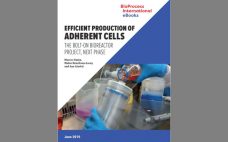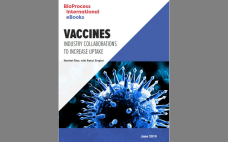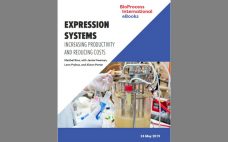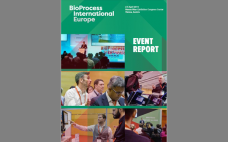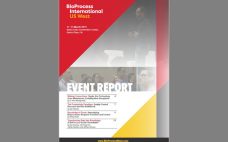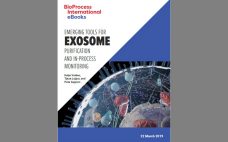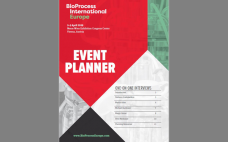Some years ago, The Bolt-on Bioreactor (BoB) project was launched with an objective of bringing to the market an efficient bioreactor for culturing adherent cells. The BoB team identified four challenges that needed be addressed to succeed: volumetric productivity, process automation, containment and sterility, and process economics. BPI published findings related to those challenges and proposals of the BoB team to solve them in a four-article series in 2015. Here, the author offers an update on developments in The Bolt-on…
eBooks
eBook: Vaccines – Industry Collaborations to Increase Uptake
Vaccines save millions of lives every year, and the continuing increases in the number of administered doses and worldwide distribution of vaccines for long-standing diseases such as polio and malaria have contributed to the improvement in public health. Vaccine developers and manufacturers are partnering with private and government agencies to raise global vaccine uptake by addressing remaining challenges with production capacity, distribution, safety, and accessibility. And the implementation of new technologies such as virus-like particles and cell/DNA-based vaccines are helping…
eBook: Expression Systems — Increasing Productivity and Reducing Costs
Biopharmaceutical manufacturers are facing increasing pressures to improve productivity and reduce time to clinic and market. Increasing productivity begins with selecting the appropriate expression system for each protein. Current efforts to boost expression titers also are focused on implementing selection/screening technologies, engineering Chinese hamster ovary (CHO) expression systems, and accelerating timelines for the development of complex next-generation therapies. BioProcess International asked three representatives of the industry’s leading companies to comment on current expression system technologies and strategies Just fill out this…
BioProcess International Europe 2019 Event Report
BioProcess International Europe has distinguished itself as a must-attend event for industry decision makers around the world. While complementing and connecting to content delivered at all BPI events, this conference delivers unique and applicable information not presented anywhere else. Here, BioProcess International’s publisher and senior technical editor offer their perspectives on this year’s meeting in Vienna, Austria, with a program overview and exploration of themes that arose from the sessions and talks: from accelerated cell-line engineering to continuous bioprocessing, new…
2019 BioProcess International West Event Report
At the BPI West conference in Santa Clara, CA, common themes wove throughout multiple tracks specific to process stages and levels of regulatory scrutiny. The BPI West program brings upstream and downstream experts together into the same sessions based on whether they share early or late-stage concerns. Even though special tracks addressed viral safety and technological advancements this past March, and preconference symposia focused on specific topics, a significant amount of session overlap throughout the week ensured that attendees could…
Monoclonal Antibodies: Beyond the Platform in Manufacturing
The vast majority of monoclonal antibody (MAb) production processes are based on fed-batch Chinese hamster ovary (CHO) cell culture and protein A affinity column chromatography capture. Increasing cost-consciousness — among innovator companies as well as biosimilar makers — has many companies looking “beyond the platform” for less expensive alternatives that may provide better results. Here the BPI editors review some state-of-the-art alternatives in upstream and downstream MAb drug substance bioprocessing as well as drug-product manufacturing. The current “gold standard” platform…
Emerging Tools for Exosome Purification and In-Process Monitoring
This eBook introduces new analytical approaches that enable in-line chromatographic detection of exosomes. One approach can discriminate extracellular vesicles from nonvesicle contaminants, and one potentially can discriminate exosomes from other vesicles. Examples illustrate how they enable development of more effective and better documented purification methods. The special qualifications of monolithic chromatography media for exosome purification are discussed. New process tools designed to accommodate some of the special challenges of exosome purification are introduced. Exosomes represent one of several species of…
BioProcess International Europe 2019: Event Planner
BioProcess International Europe has earned its reputation as the leading and largest European bioprocessing industry event. It is a key time each year when the industry connects to share new ideas and innovations across all phases of bioprocessing: from cell line development through upstream and downstream, with bioprocess analytics, viral safety, continuous manufacturing, and vaccines. This year’s meeting on 2–4 April 2019 at the Messe Wien Exhibition Congress Center in Vienna, Austria will attract more than 900 scientists, engineers, and…
BioProcess International West: Event Planner
BioProcess International US West is the leading phase-based bioprocessing event for accelerating promising biologics toward commercial success. Whereas most bioprocessing event sessions are broken out by departmental function — e.g., analytical, upstream, and downstream — the BPI US West sessions are defined by stage of development, providing drug developers a unique opportunity to break down silos across multiple departments to discuss today’s leading solutions toward improving the speed, lowering the cost, and increasing the quality/safety of biologics in development. Each…
Continuous Chromatography: Experts Weigh in on the Possibilities and the Reality
Discussions of continuous processing in the biopharmaceutical industry are an important part of current efforts toward intensifying bioproduction and bioprocessing. Biomanufacturers are looking at all components of their development and manufacturing processes for ways to reduce the size of their facilities, lower costs, and increase speed and flexibility of operations. Increasing options for and availability of single-use technologies have been major enablers of myriad attempts to improve efficiencies. Although the general consensus may still be that single-use components are more…

